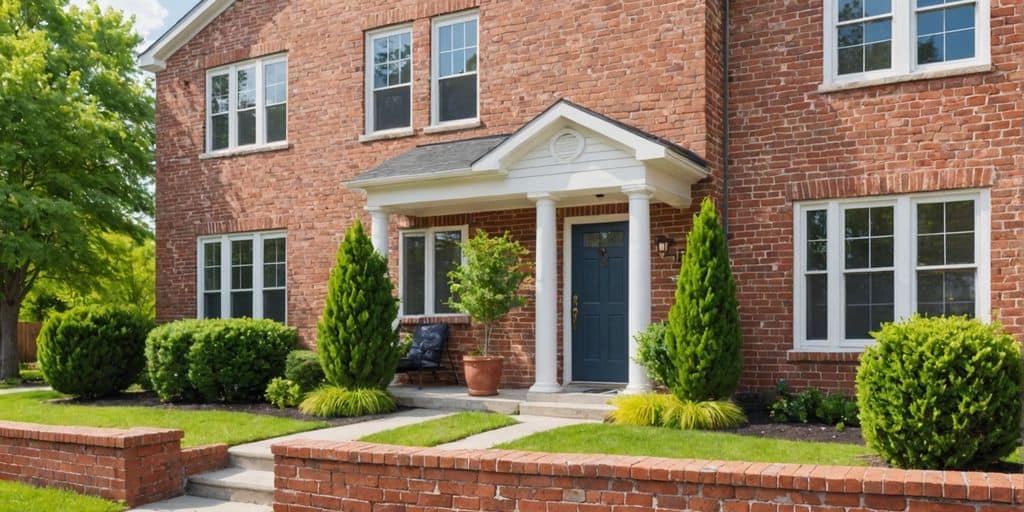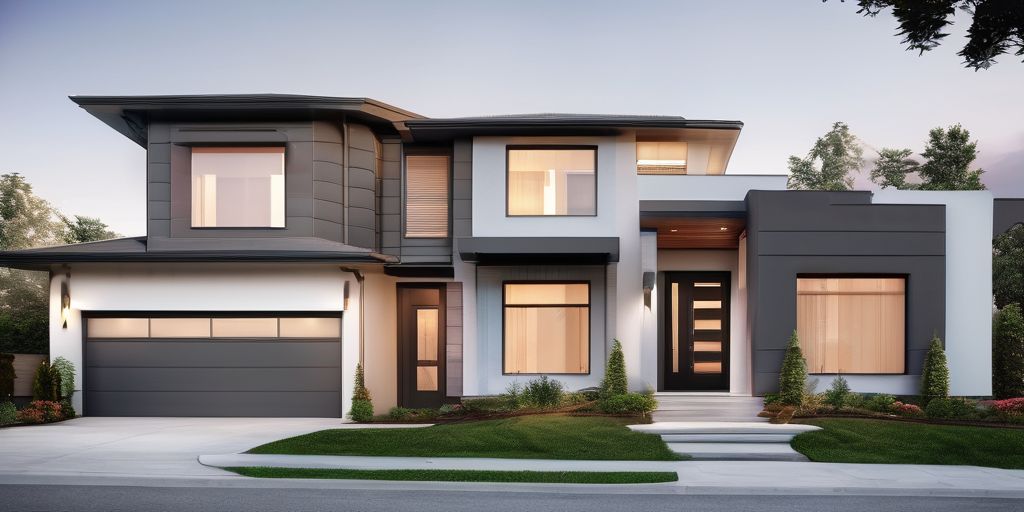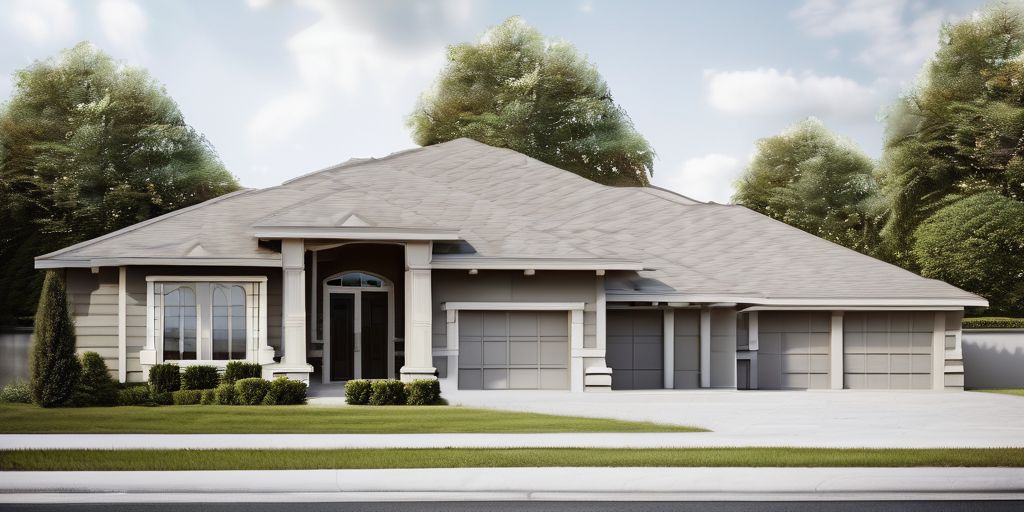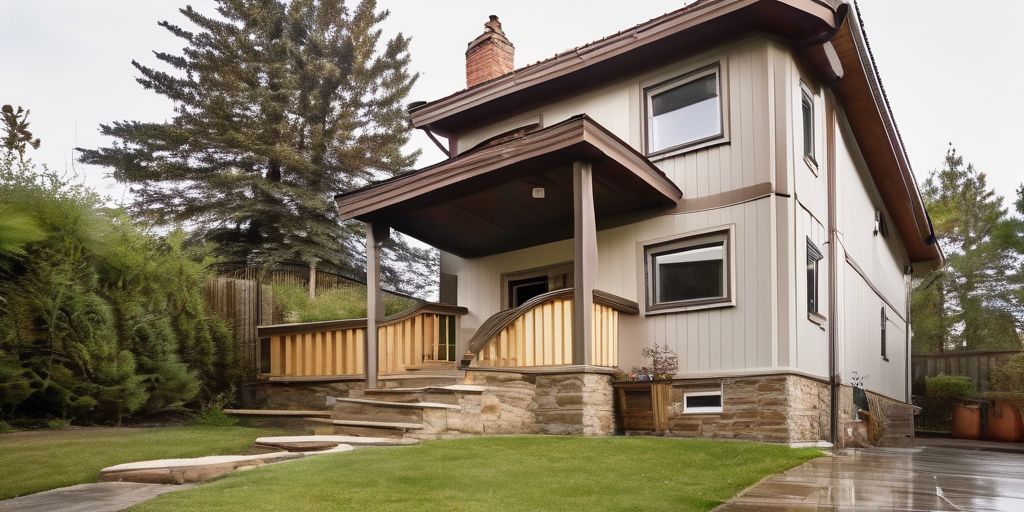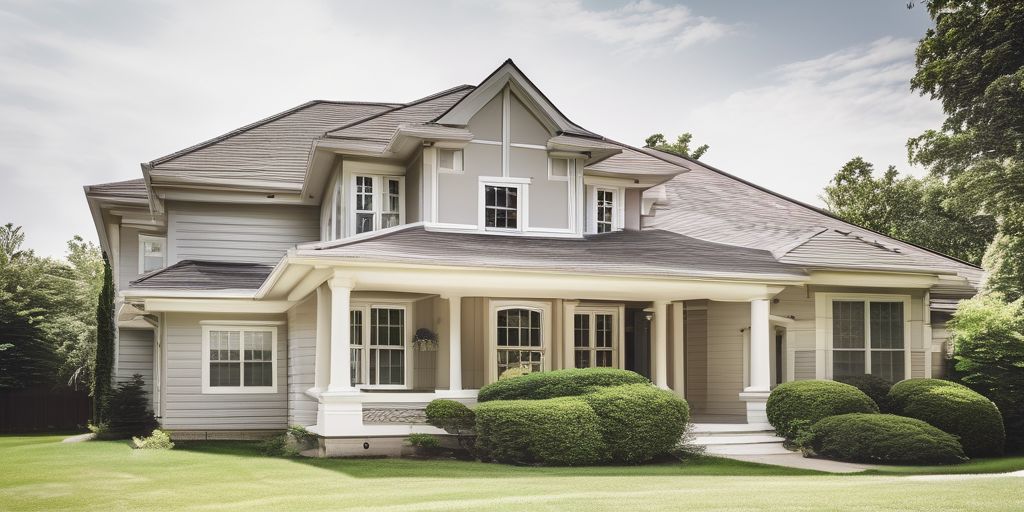Painting the exterior of a brick house in Hamilton requires careful planning, especially when dealing with the area’s seasonal temperature changes. From understanding the ideal weather conditions to choosing the right paint, every step plays a crucial role in ensuring a long-lasting and beautiful finish. This article will guide you through the essential aspects of painting your brick house in Hamilton, including temperature considerations, moisture issues, and safety measures.
Key Takeaways
- The best temperature range for painting brick houses in Hamilton is between 50°F and 77°F to ensure proper paint adhesion and curing.
- Address moisture problems before painting by identifying issues, waterproofing, and thoroughly cleaning and repairing the brickwork.
- Choose UV-resistant and durable paints to withstand Hamilton’s seasonal changes and protect the brickwork from weather damage.
- The best times to paint are late spring and early fall, as these seasons offer mild temperatures and lower humidity levels.
- Proper preparation, including cleaning, repairing, and priming the brickwork, is essential for better paint adhesion and longevity.
Ideal Temperature Range for Painting Brick Houses in Hamilton
Understanding Temperature Impact on Paint Adhesion
Temperature plays a crucial role in how well paint adheres to brick surfaces. Extreme temperatures can cause the paint to either dry too quickly or not cure properly, leading to peeling or cracking over time. It’s important to understand that both the air temperature and the temperature of the brick itself can affect the outcome.
Optimal Temperature Conditions
The ideal temperature range for painting brick houses in Hamilton is between 10°C and 25°C. This range ensures that the paint adheres properly and cures effectively. Here are some tips to keep in mind:
- Aim for a day with mild temperatures and overcast skies.
- Early morning or late afternoon are the best times to paint, as temperatures are cooler.
- Avoid painting during the hottest part of the day, typically between 10 AM and 4 PM.
Temperature Fluctuations and Their Effects
Hamilton’s weather can be unpredictable, with temperature fluctuations that can affect your painting project. Rapid changes in temperature can cause the paint to expand and contract, leading to cracks and other issues. To mitigate these effects:
- Use reliable weather forecasting tools to plan your painting days.
- Be prepared to delay your project if the forecast predicts rain or extreme weather conditions.
- Keep an eye on humidity levels, as high humidity can also impact paint adhesion.
Remember, timing is everything when it comes to painting your brick house. Proper planning and preparation can make all the difference in achieving a long-lasting, beautiful finish.
Addressing Moisture Issues Before Painting Your Brick House
Identifying Moisture Problems
Recognizing the signs of moisture damage in brick houses is crucial for timely intervention and repair. Early detection can save homeowners from costly repairs in the future. Here are some common indicators of moisture issues:
- Efflorescence: White, powdery deposits on the brick surface.
- Spalling: Flaking or chipping of the brick.
- Mold or mildew: Visible growth on the brick or mortar.
- Damp spots: Persistent wet areas on the interior walls.
Waterproofing Techniques
To protect your brick house from moisture, consider the following waterproofing techniques:
- Sealants: Applying a high-quality sealant can create a barrier against water infiltration.
- Flashing: Proper installation of flashing around windows, doors, and roofs to direct water away from the brickwork.
- Drainage: Ensuring proper drainage around the foundation to prevent water accumulation.
- Ventilation: Improving ventilation in areas prone to moisture buildup, such as basements and attics.
Proactive maintenance, such as regular inspections and sealing of brickwork, can prevent the progression of moisture damage. It’s advisable to consult professionals for significant issues, especially when dealing with heritage properties where preservation is key.
Cleaning and Repairing Brickwork
Before painting, it’s essential to clean and repair your brickwork to ensure the paint adheres properly and lasts longer. Here are some steps to follow:
- Cleaning: Use a pressure washer or a stiff brush with water and mild detergent to remove dirt, mold, and mildew from the brick surface.
- Repairing: Fix any cracks or damaged mortar joints by repointing, which involves removing the old mortar and applying new mortar.
- Priming: Apply a coat of primer before you start painting to protect your house paint from wind, water, and other weather damage. The paint will last longer this way.
By understanding the impact of weathering and taking proactive steps, homeowners can preserve the aesthetic appeal and structural integrity of their painted brick homes.
Choosing the Best Paint for Hamilton’s Seasonal Changes
UV-Resistant Paint Options
Hamilton’s unique position in the Golden Horseshoe means it experiences a range of weather conditions that can affect exterior paint choices. Understanding the local climate is crucial when selecting paint for brickwork that will be exposed to the sun’s rays. Here are some key considerations:
- Choose paint that offers long-term durability and UV resistance.
- Select colors that possess high resilience to fading and sunlight damage.
- Prepare the brick surface meticulously to enhance adhesion and longevity in sunlit areas.
Durability Against Seasonal Changes
Hamilton’s climate, characterized by its varying sun exposure and seasonal weather conditions, necessitates the selection of exterior brick paint that can withstand UV radiation and temperature fluctuations without fading or deteriorating quickly. Consider the following:
- Opt for paints that are formulated to endure temperature extremes.
- Ensure the paint can handle the moisture levels typical of Hamilton’s seasons.
- Look for paints with protective coatings to guard against weather-related wear and tear.
Eco-Friendly Paint Choices
In addition to durability and UV resistance, it’s important to consider the environmental impact of your paint choice. Eco-friendly paints are a great option for those looking to minimize their environmental footprint. When selecting eco-friendly paints, keep in mind:
- Choose paints with low or zero VOC (Volatile Organic Compounds) to reduce harmful emissions.
- Look for paints made from natural or recycled materials.
- Ensure the paint is free from harmful chemicals and toxins.
By choosing eco-friendly paints, you not only protect the environment but also ensure a healthier living space for you and your family.
Selecting the right paint for your brick house in Hamilton involves balancing durability, UV resistance, and environmental considerations. With the right choice, you can ensure a beautiful and long-lasting finish that harmonizes with your surroundings.
Best Time of Year to Paint a Brick House in Hamilton
Optimal Seasons for Painting
The best time to paint your brick house in Hamilton is during the late spring or early fall. These seasons offer mild temperatures and lower humidity levels, which are ideal for painting. Avoiding extreme weather conditions ensures that the paint adheres properly and cures effectively.
Ideal Weather Conditions
When planning your painting project, consider the following weather conditions:
- Temperature: Aim for a day with temperatures between 10°C and 25°C.
- Humidity: Lower humidity levels are preferable to prevent moisture from affecting the paint.
- Rain: Ensure there is no rain in the forecast for at least 24 hours after painting.
Timing Your Project
Timing is crucial for a successful painting project. Here are some tips:
- Early Morning or Late Afternoon: These times are best as temperatures are cooler and the sun is not as intense.
- Avoid Midday Heat: Painting during the hottest part of the day can cause the paint to dry too quickly, leading to an uneven finish.
- Check the Forecast: Use reliable weather forecasting tools to plan your painting days. Be prepared to delay your project if the forecast predicts rain or extreme weather conditions.
Remember, proper planning and preparation can make all the difference in achieving a long-lasting, beautiful finish for your brick house.
Preparing Your Brick House for Painting
Cleaning and Repairing Brickwork
Before you start painting, it’s essential to clean and repair your brickwork. Follow these steps:
- Remove any visible dirt, grime, or biological growth like moss or algae.
- Look for stains from pollutants or bird droppings and clean them gently.
- Ensure the brickwork is thoroughly dry before you begin painting.
Priming for Better Adhesion
Priming is a crucial step to ensure the paint adheres well to the brick surface. Here’s how to do it:
- Clean the brick surface thoroughly to remove any dirt, debris, or old paint.
- Repair any cracks or damage to the bricks and mortar to prevent future deterioration.
- Apply a primer specifically designed for exterior brick to help the paint adhere and to block potential stains.
- Choose a paint that is labeled as UV-resistant to help prevent fading and degradation from the sun’s rays.
- Use a high-quality brush or roller designed for exterior surfaces, and apply the paint in thin, even coats.
When painting, it’s best to choose a day with temperatures ranging from 10-30°C and low humidity. Avoid painting in direct sunlight or windy conditions to prevent uneven drying.
Tools and Materials Needed
Having the right tools and materials can make your painting project smoother. Here’s a list of what you’ll need:
- High-quality exterior primer
- UV-resistant paint
- Brushes or rollers designed for exterior surfaces
- Cleaning supplies (e.g., mild detergent, water, scrub brush)
- Repair materials (e.g., mortar, sealant)
Proper preparation and high-quality paint ensure a flawless finish in brick painting. Bare wood, wood filler, and rust-stained areas should all be primed. If you just have a few bare patches, one quart of exterior-grade primer should be enough.
Selecting the Perfect Paint Color for Your Brick House
Choosing the right paint color for your brick house in Hamilton can significantly impact its curb appeal and overall aesthetic. Here are some key considerations to help you make the best choice:
Safety Measures for DIY Exterior Brick Painting Projects
When painting brick houses, safety should always be a top priority. From using the right protective gear to ensuring proper ventilation, there are several steps you can take to make your painting project safer and more efficient.
Using the Right Protective Gear
Wearing the right protective gear can make a significant difference in your safety. Essential items include:
- Safety goggles to protect your eyes from paint splatters.
- Gloves to keep your hands clean and safe from chemicals.
- A mask or respirator to avoid inhaling fumes.
- Long sleeves and pants to protect your skin.
Additionally, ensure you have a first aid kit nearby in case of minor injuries.
Ensuring Proper Ventilation
Proper ventilation is crucial when painting, especially when working with chemicals. Always paint in a well-ventilated area to avoid inhaling harmful fumes. If you’re painting indoors, open windows and use fans to circulate air. For exterior projects, choose a day with mild weather to keep the air moving.
Handling Paint Spills and Accidents
Accidents can happen, so it’s important to be prepared. Here are some tips for handling paint spills and accidents:
- Act quickly to clean up spills before they dry.
- Use absorbent materials like rags or paper towels to soak up excess paint.
- Dispose of paint-soaked materials properly to avoid fire hazards.
- Keep a fire extinguisher nearby in case of emergencies.
Some essential safety measures for DIY exterior brick painting projects include sun protection, monitoring weather changes, emergency preparedness, and handling paint spills and accidents.
By following these safety measures, you can ensure a safer and more efficient painting project. Whether you’re an experienced exterior painter or a DIY enthusiast, taking these precautions will help you achieve the best results while keeping yourself safe.
Thinking about painting your brick exterior yourself? It’s important to follow the right safety steps to ensure a smooth and safe project. For more tips and expert advice, visit our website and explore our comprehensive guides.
Conclusion
Painting your brick house in Hamilton can be a rewarding project if you plan it right. By choosing the best time of year, such as late spring or early fall, and paying attention to the weather, you can ensure a smooth and long-lasting finish. Remember to address any moisture issues beforehand and pick a durable, UV-resistant paint that can handle Hamilton’s seasonal changes. With the right preparation and timing, your brick house will not only look great but also stand up to the elements for years to come. Happy painting!
Frequently Asked Questions
What is the ideal temperature range for painting brick houses in Hamilton?
The best temperature range for painting brick houses in Hamilton is between 50°F and 77°F. This range helps the paint stick well and dry properly.
How can I address moisture issues before painting my brick house?
To tackle moisture issues, first find any problem areas, use waterproofing methods, and make sure the brickwork is clean and fixed up.
What type of paint is best suited for Hamilton’s seasonal changes?
For Hamilton’s changing seasons, UV-resistant and durable paints work best. These paints can handle temperature changes and protect the bricks from weather damage.
When is the best time of year to paint a brick house in Hamilton?
Late spring and early fall are the best times to paint a brick house in Hamilton. These seasons have mild temperatures and low humidity, perfect for painting.
How does Hamilton’s climate affect the choice of exterior brick paint?
Hamilton’s climate has varying sun exposure and seasonal weather. You need exterior brick paint that can handle UV rays and temperature changes without fading or breaking down quickly.
What are the best paint colors for sunlit exterior bricks in Hamilton?
When picking paint colors for sunlit bricks, think about how colors look at different times of the day, how sunlight might fade the color, and how the color matches the surroundings.

